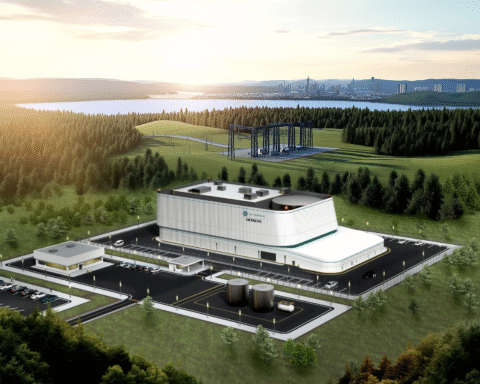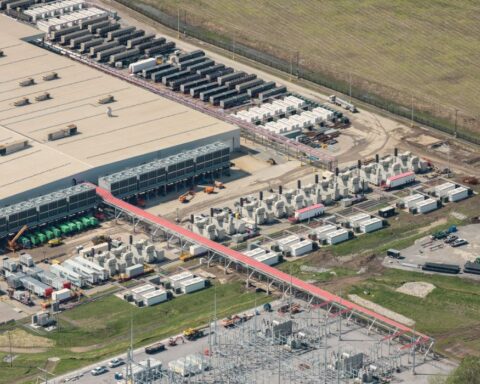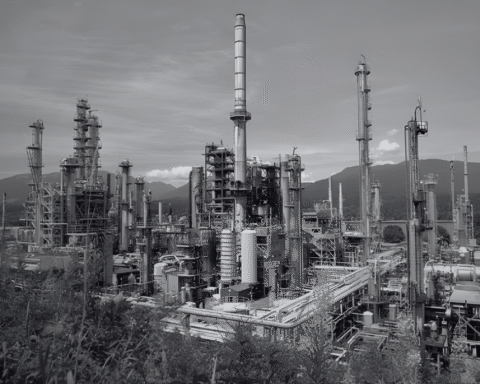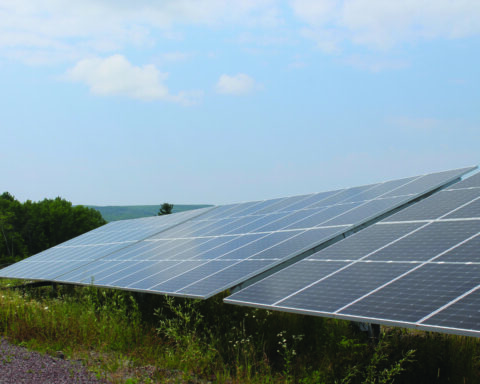This is not your average plot of southwestern Ontario farmland. In May, a 10-acre tract of land in Haldimand County officially turned into Canada’s largest grid-scale battery storage facility, and one of the largest in the world. Now, 278 lithium-ion battery units are drawing and storing surplus power from Ontario’s electricity grid, doubling the province’s energy storage capacity to 475 megawatts and providing a bolstered electrical backbone to surging demand.
When power demand is low, such as at night, the portable washroom-sized battery units will act as a safe harbour for surplus electricity from everything from nuclear to wind that would otherwise go to waste. When power demand ramps up, that energy will be available for use, with a storage capacity robust enough to power a city the size of Oshawa, with around 190,000 residents.
The venture is a joint partnership between Six Nations of the Grand River Development Corporation (SNGRDC), Mississaugas of the Credit Business Corporation, NRStor Inc., Aecon Concessions and Northland Power Inc., the latter of which owns 70% of the project. Together, they form the Oneida Energy Storage LP, a “first of its kind” project that showcases the sort of developments that the International Energy Agency says the world needs a lot more of to power up the energy transition.
Oneida is held up as a model for partnerships that prioritize Indigenous involvement in clean energy development. It was conceived by SNGRDC CEO Matt Jamieson of the Tuscarora Nation in 2018, and he reached out to Toronto-based NRStor to develop the concept. “Oneida Energy Storage achieving commercial operation is symbolic to us on many levels,” Jamieson said in a press release. “Not only does the project create value for Ontario ratepayers and our community; our involvement highlights the importance of Indigenous partnership and inclusion – it exemplifies what can be accomplished together.”
Oneida’s workforce is primarily Indigenous. During peak construction, there were roughly 180 jobs. Six Nations has invested heavily in renewables, with six solar and 14 wind projects. Jamieson believes the Oneida battery storage facility will help his community reap more economic benefits from the solar and wind farms they have invested in, either directly or indirectly through community benefit plans, around Six Nations Territory in southern Ontario. They are involved in four other battery projects.
Oneida is now selling energy back into Ontario’s electrical grid, run by Ontario’s Independent Electricity System Operator (IESO). It is also generating revenue by providing ancillary services to the system. The project is expected to reduce emissions by 1.2 to 4.1 million tonnes over the life of the project, which is roughly the same as taking 40,000 cars off the road.
Grid-scale storage will play an important role in hitting net-zero emissions by 2050, the International Energy Agency says, offering flexibility and backup during the energy transition. Battery storage is a newer form of storage, and it holds promise because it can be installed virtually anywhere, unlike the more commonly used hydropower storage that pumps water into a reservoir to be used later.
In a statement to mark the facility launch, Ontario Energy Minister Stephen Lecce called it a “critical step” in delivering the energy capacity that Canada’s most populous province needs. Lesley Gallinger, president and CEO of IESO, said in a press release it “marks a new era in the evolution of our electricity system.”
Even more remarkable for energy projects: it finished on time and under budget. The project received funding from Natural Resources Canada and short- and long-term loans totalling $535 million from the Canada Infrastructure Bank. It cost about $700 million to complete, less than the $800-million forecast in 2023.
“The Oneida Energy Storage project exemplifies the power of Indigenous leadership in shaping Canada’s sustainable energy future,” said Ogima Kwe (Chief) Claire Sault of the Mississaugas of the Credit First Nation in a statement.
Indigenous communities are at the forefront of renewable-energy development in Canada. Most of Canada’s renewable-energy projects are on Indigenous territories or reserves. First Nations, Métis and Inuit are partners or beneficiaries of roughly 20% of the country’s electricity generating infrastructure, with most of that in renewables.
The Weekly Roundup
Get all our stories in one place, every Wednesday at noon EST.







